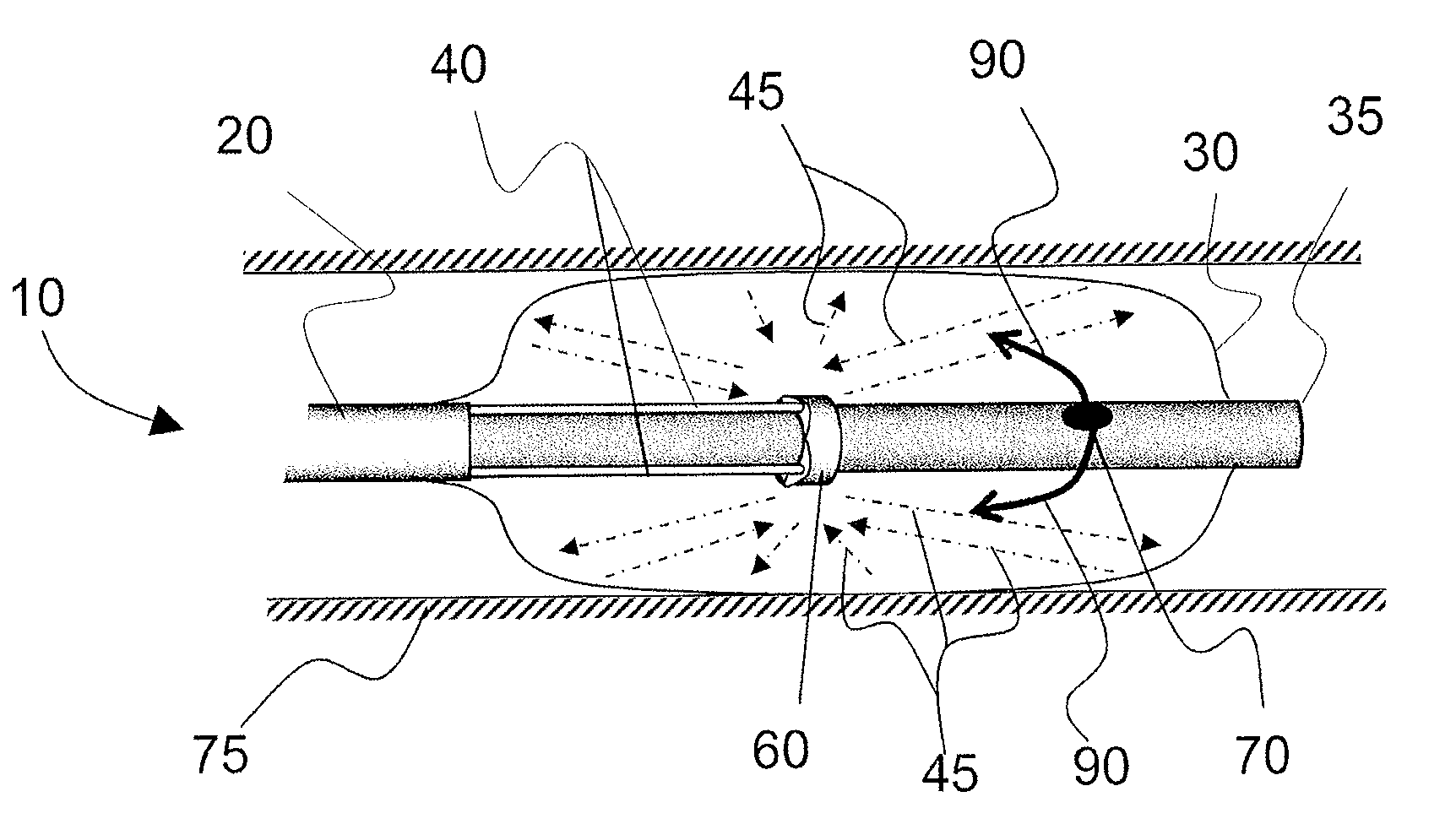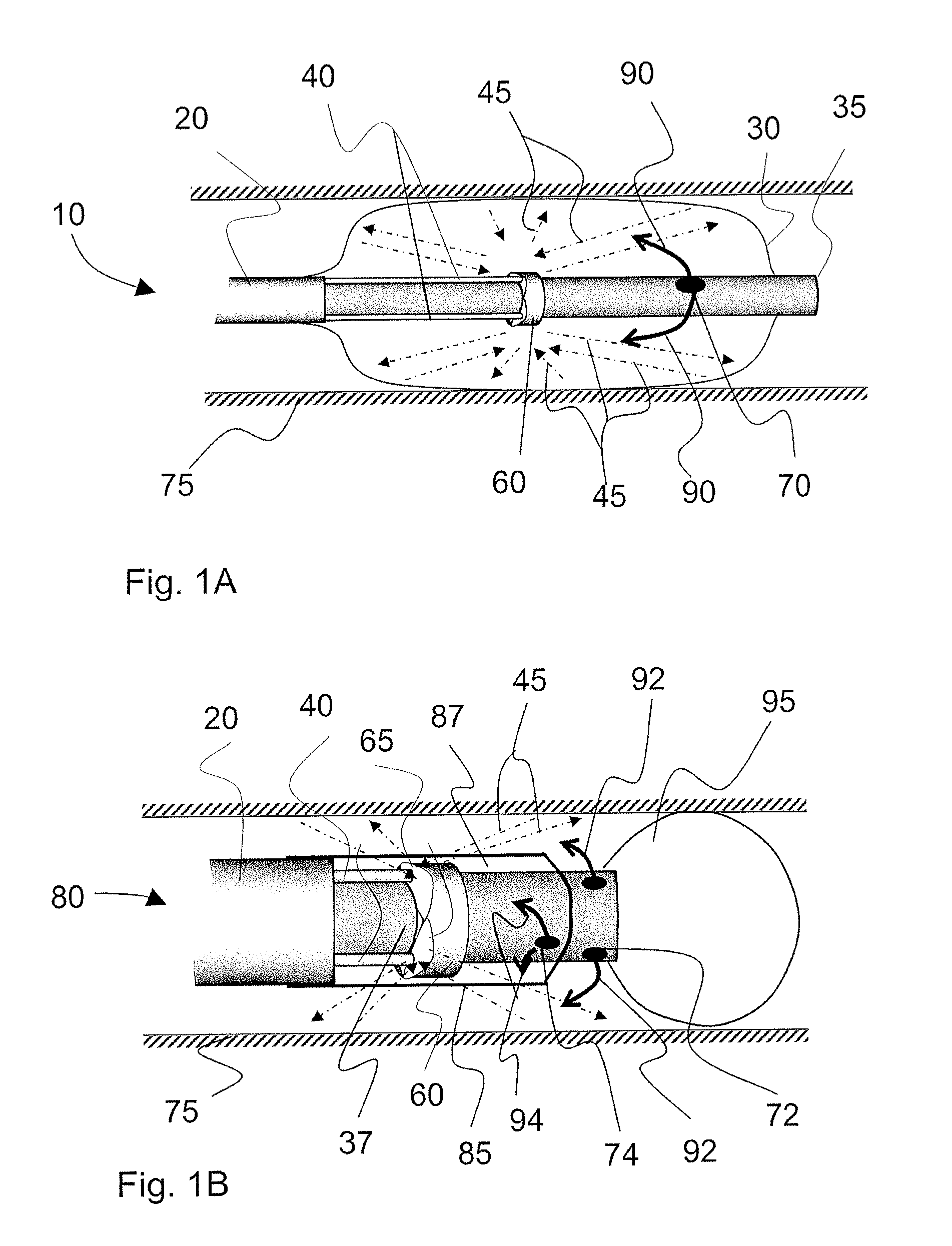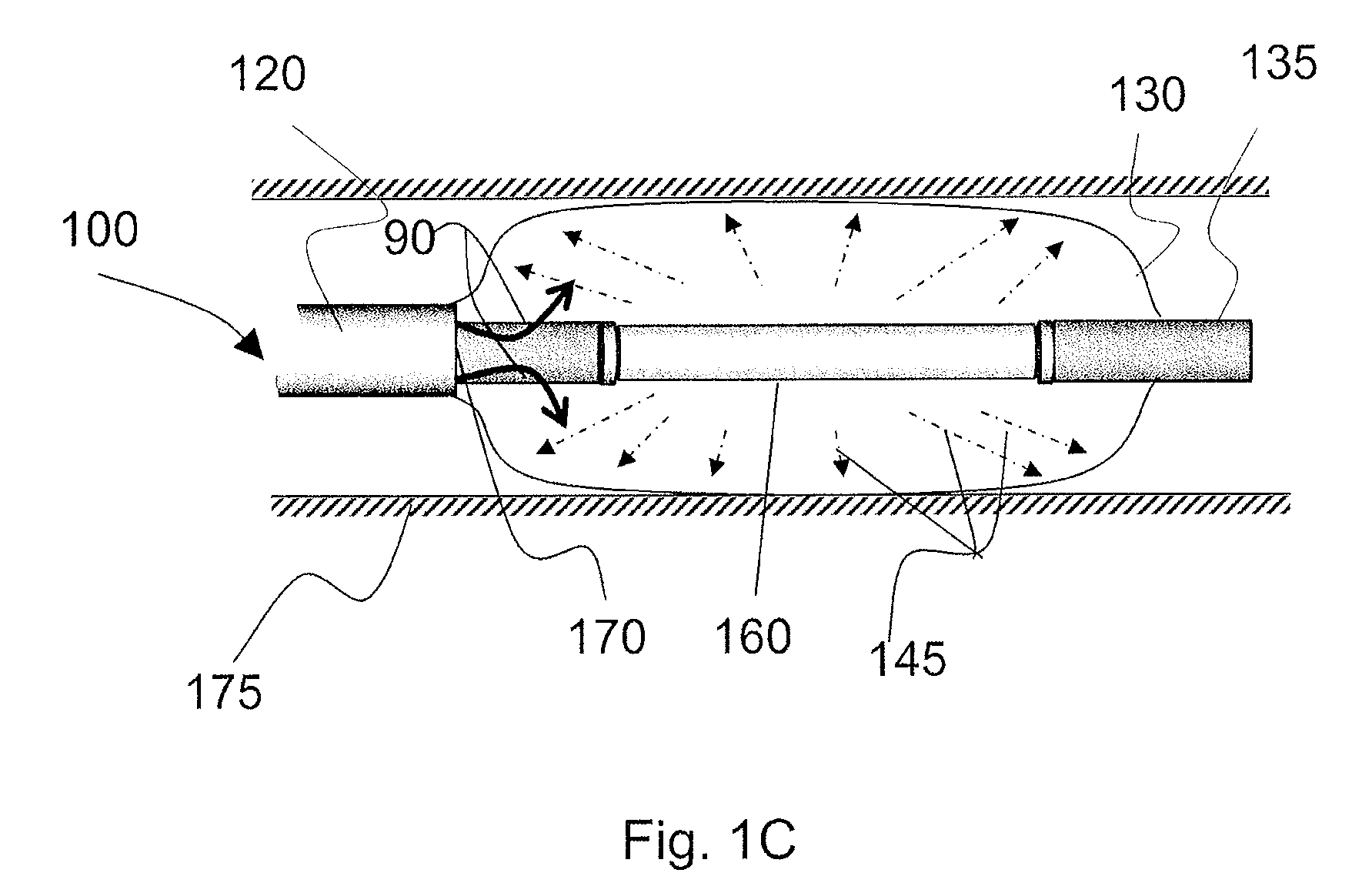Fluid media for bio-sensitive applications
a bio-sensitive material and fluid media technology, applied in the field of fluid media, can solve the problems of many drawbacks, safety risks, damage or degradation of certain types of bio-sensitive materials, etc., and achieve the effect of less sensitiv
- Summary
- Abstract
- Description
- Claims
- Application Information
AI Technical Summary
Benefits of technology
Problems solved by technology
Method used
Image
Examples
Embodiment Construction
[0039]Referring to FIG. 1A, an illustrative side perspective view of the distal end of a catheter probe 10 is shown according to an embodiment of the invention. Fibers 40 extend through catheter body 20 along guidewire sheath 35 to a reflecting element 60. A flexible expandable balloon 30 is attached at an end to a protective catheter body 20 and at the opposite end to a guidewire sheath 35, enclosing the ends of fibers 40 and the reflecting element 60. Probe 10 can be inserted into place, for example, within a damaged / diseased vessel wall in accordance with an angioplasty procedure. Once in place, balloon 30 can be expanded with fluid media 90 to a pressure of up to, for example, about 8-12 atmospheres in order to prop the balloon surface against vessel walls 75, thereby substantially displacing blood in the luminal region and fixing in place probe 10 with respect to vessel walls 75. Fibers 40 can be connected to a spectrometer, interferometer, or other visualization / analysis devic...
PUM
 Login to View More
Login to View More Abstract
Description
Claims
Application Information
 Login to View More
Login to View More - R&D
- Intellectual Property
- Life Sciences
- Materials
- Tech Scout
- Unparalleled Data Quality
- Higher Quality Content
- 60% Fewer Hallucinations
Browse by: Latest US Patents, China's latest patents, Technical Efficacy Thesaurus, Application Domain, Technology Topic, Popular Technical Reports.
© 2025 PatSnap. All rights reserved.Legal|Privacy policy|Modern Slavery Act Transparency Statement|Sitemap|About US| Contact US: help@patsnap.com



